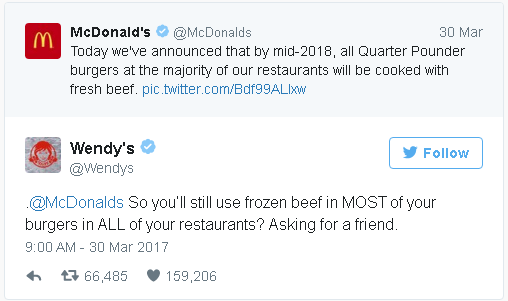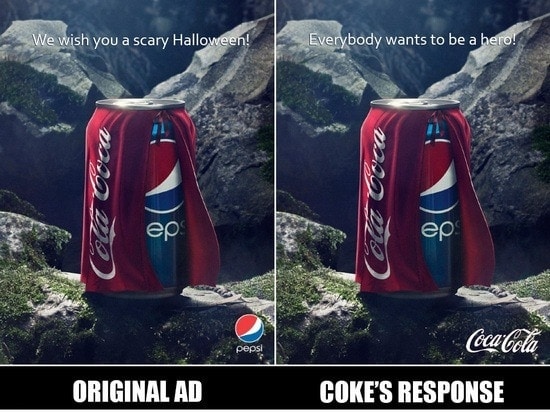When you’ve worked in advertising as long as I have, you know that creating social medial content is not as easy as a lot of people assume. While I only started out as a graphic designer, I learned how I’d have to understand a bit of how social media advertising works and how to catch more users’ attention if I wanted to create quality content for any social media campaigns for our client.
While there is no sure way to get the numbers on your side, there are steps you need to take to create viral (or at least traffic-driving) graphics, content, and any other form you post on social media. This will take time to create, and even more time before you start to see results, but by following these steps, you can help launch successful social media campaigns by producing the right graphics.
Research Your Competitors

Source: https://i.redd.it/gkpld92sawoy.png
What works for your competition can also work for you – as long as you know how to make it better. Look at what gets them more traffic: is it their copy, their deals, or their active responses? From there, you can design the right graphics that could sort of one-up them.

Source: https://www.marketing91.com/wp-content/uploads/2014/08/527d76892c254_original-11.jpg
Look at, for example the never-ending feud between Coca-Cola and Pepsi. In 2014, Pepsi tried to insult Coca-Cola with this Halloween ad. Knowing social media would be waiting for a reply, Coca-Cola responded in the funniest way: the same ad, but with a different caption in their favor. Their response drew thousands of responses on social media.
Understanding what your competitors’ social media strategies are allow you to create something stronger for your brand, giving you a competitive edge. If you’re an experienced social media specialist, it’s possible to observe and use research data, so having some knowledge about how social media works can help you create good content.
Develop Your Own Strategy Business
Before creating graphics, you should know how your campaign strategy works so that, in all graphics, the idea is uniform. What is the goal of your campaign? To increase visibility on the brand, a new product, or a line of products?
Look at your starting metrics. If you want to drive leads, you’ll need to track the number of users and then set goals and expectations. You might also have to align with your social media advertisers to make sure you understand the campaign before beginning.
Think of Out of the Box Content
The rule of thumb we practice when making social media content isto divide our posts into three types: brand posts, share posts, and sell posts. A brand post highlights the business, so this can be a daily message to the business’ visitors, contests, and giveaways. You might have seen a lot of giveaway posts that ask people to like and share a post, which could lead to it going viral.
 A share post is a link to an article within the business’ industry, but not from the business’ own website. It is more on information, and it helps visitors learn more about things related to your business. A sell post focuses on the product and convinces visitors to sell.
A share post is a link to an article within the business’ industry, but not from the business’ own website. It is more on information, and it helps visitors learn more about things related to your business. A sell post focuses on the product and convinces visitors to sell.
By now, we already know what a traditional ad looks like on Facebook, Twitter, Instagram, and other social media websites. But don’t be afraid to use other means to advertise your business. For example, Facebook now has the option to create 3D posts and make pictures move while the visitor holds their finger on the post. Instagram has the feature to put ads in between Instagram Stories, and ads that use this feature effectivelycan give users the option to swipe up to learn more.
You’ll want to promote one message – that is, the one your campaign is focusing on. Use different formats such as infographics, videos, blog posts, and try to take note of which one gets the most results. A social media page looks more interesting if there is more than one medium, and it helps keep your users engaged.
Create a Unique Hashtag
Using hashtags, especially for platforms such as Twitter and Instagram, helps drive engagement and helps you track the result of your campaigns. Lyfe Marketing found that social media campaigns that had a unique hashtag received more engagement than campaigns that didn’t have hashtags.
By convincing your followers to use your hashtag, you can get a better idea of how well your campaign is doing even if they don’t tag your business. However, try not to use common hashtags as this could become confusing with posts unrelated to your campaign. Also, avoid adding too many hashtags on your posts as this could come off as spamming your users. While Instagram allows up to 30 hashtags, limit your posts up to 10.
Track Your Performance
Lastly, to know what you can improve on social media, track your posts and see how much engagement one post is getting. See if your posts are making progress and your social media page is reaching the target and your expectations. From there, you can find areas from improvement and continue to reach higher targets in following campaigns. It’s also a good way to see which posts are getting the most traffic and how you can continue to keep the momentum.
Even if you are just making content for social media, it’s necessary to understand what goes behind creative a traffic-driving post to create quality output your followers will want to see and keep coming back to see similar posts. That way, your work will be aligned with the campaign’s goals and you gain the experience to perform better as a social media graphics designer.

